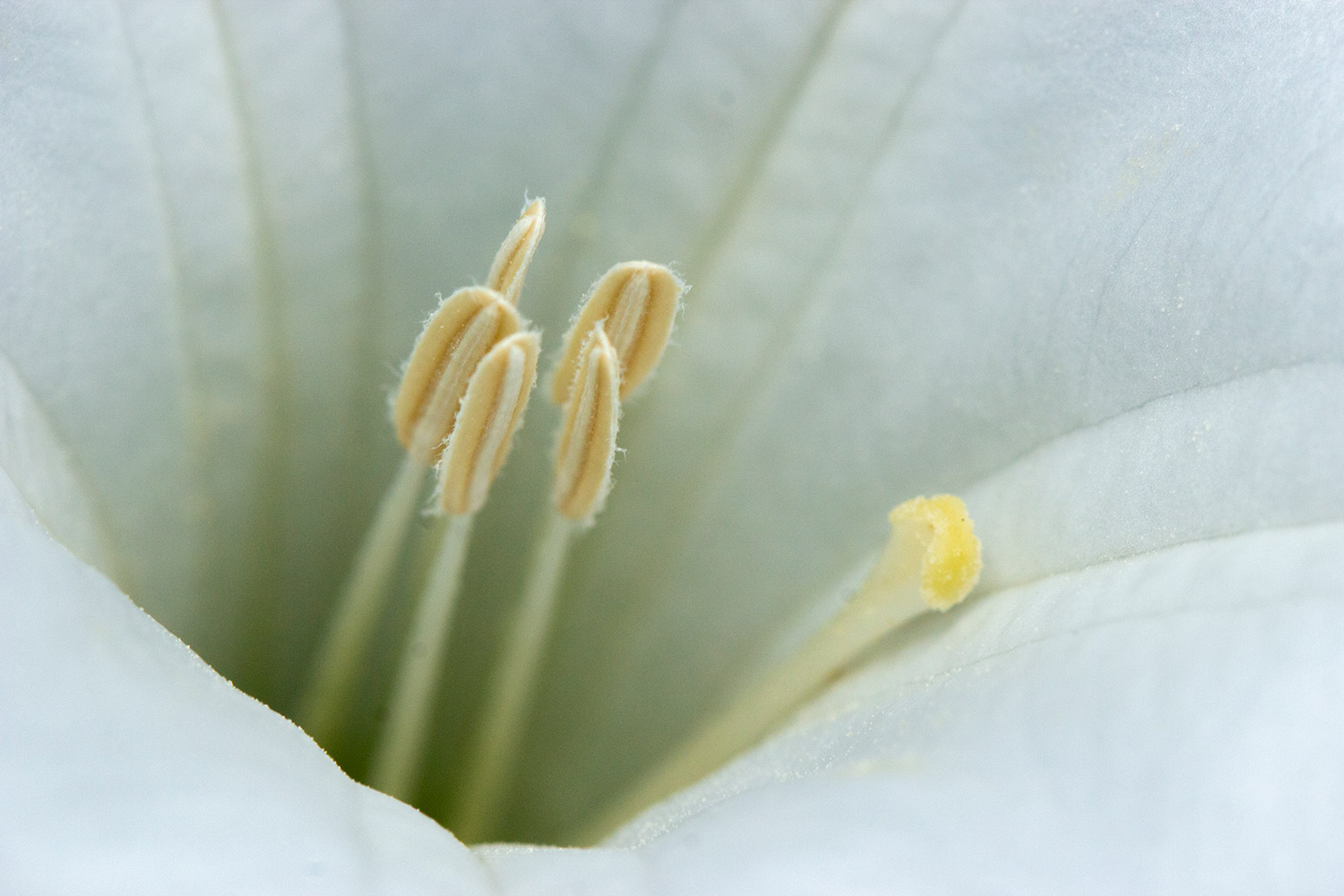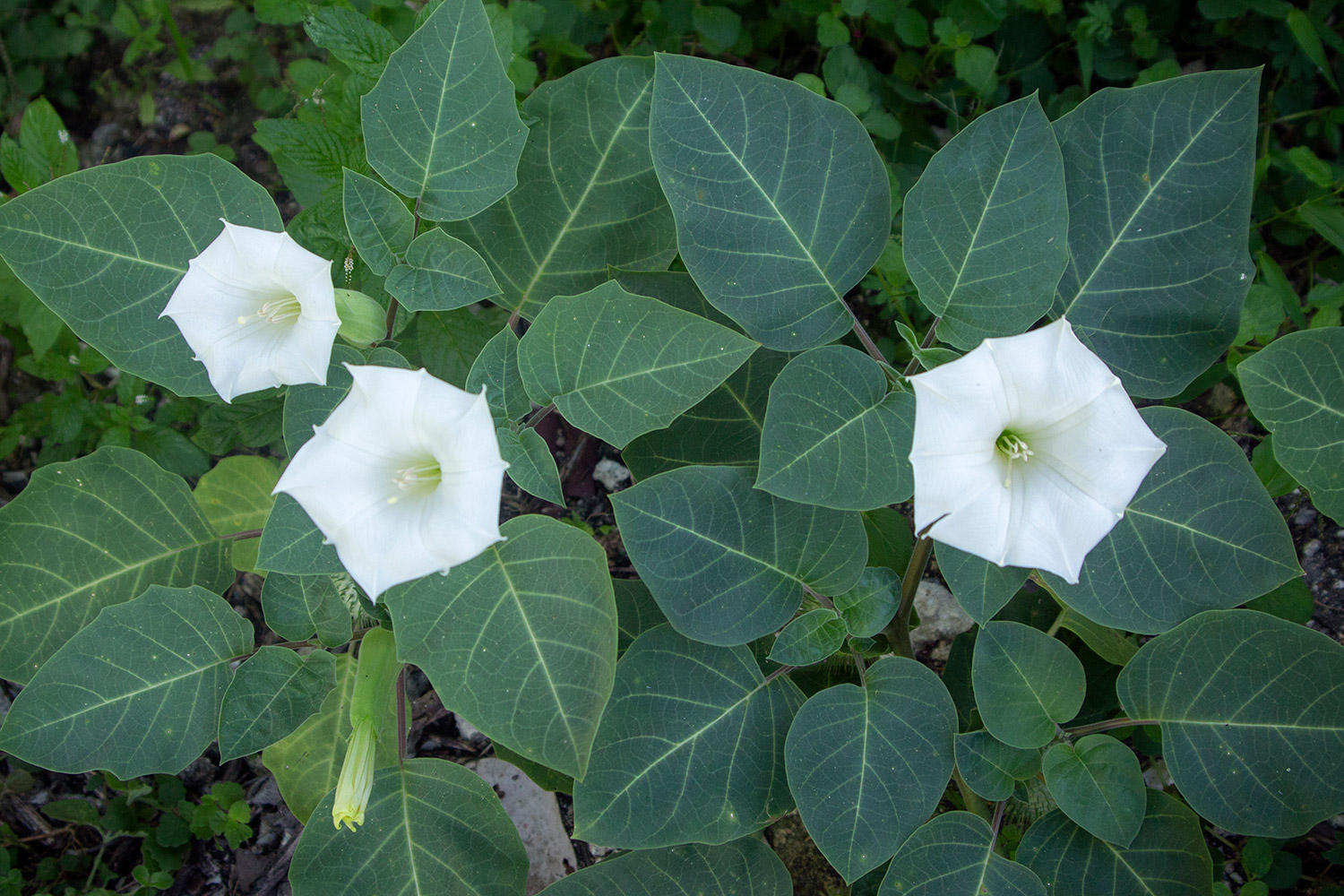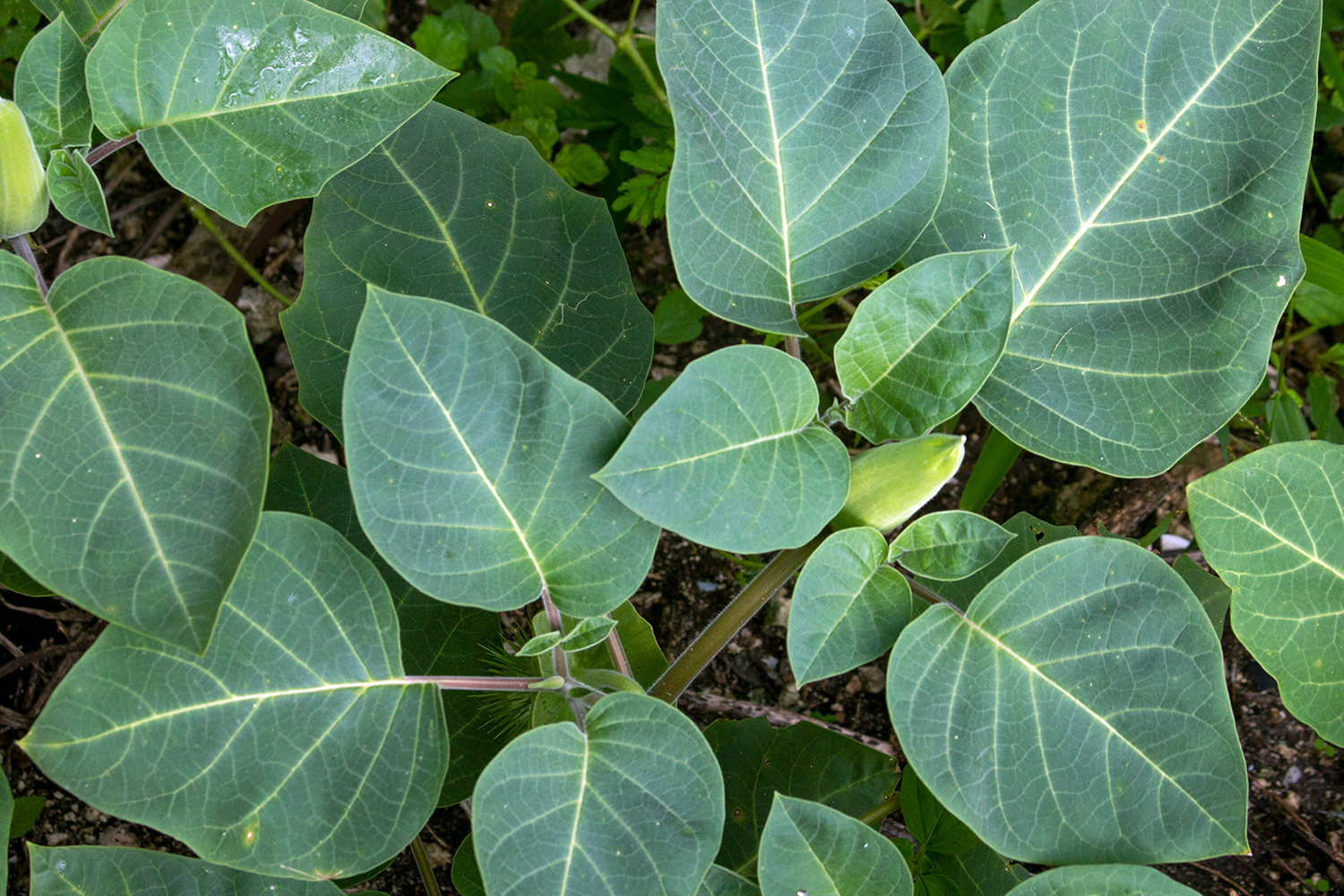
Datura, Moonflower
Datura innoxia






Datura, Moonflower
Datura innoxia
Datura, Moonflower is a plant from the Nightshade Family (Solanaceae). It is a herbaceous perennial that is native to Central and South America, but now is naturalized in many parts of the world, Barbados included. Datura is known by many names such as: pricklyburr, downy thorn-apple, Indian-apple and Moonflower to name a few.
The plant grows from a thick, tuberous root and can reach about 0.6 to 1.5 meters in height. Stems and leaves are softly hairy, giving a dull grey-green look. When bruised, the foliage gives off a sharp, rancid odor, but the flowers are strongly fragrant—especially at night.
The flowers are large, white, and trumpet-shaped. Measuring around 12–19 cm long, they open in the evening and usually close by morning. The flowers are oversized even for such a large plant, and completely tuned to the moon.
The fruit is a spiny, egg-shaped capsule roughly 5 cm across. When mature, it splits open irregularly to release many flat brown seeds.
All parts of the plant are toxic and should never be taken internally. They have been traditional external uses for asthma, motion sickness, and pain. But those applications are not recommended.
Datura, Moonflower is usually found in full sun and dry to moderately moist conditions, but can also tolerate poor, sandy, or rocky soils. Despite its beauty, it is a plant to admire with caution due to its toxicity.
Order: Solanales
Family: Solanaceae
Genus: Datura
Species: D. innoxia
Binomial name: Datura innoxia
Found in a Gully in St.Michael
Datura innoxia
Datura, Moonflower is a plant from the Nightshade Family (Solanaceae). It is a herbaceous perennial that is native to Central and South America, but now is naturalized in many parts of the world, Barbados included. Datura is known by many names such as: pricklyburr, downy thorn-apple, Indian-apple and Moonflower to name a few.
The plant grows from a thick, tuberous root and can reach about 0.6 to 1.5 meters in height. Stems and leaves are softly hairy, giving a dull grey-green look. When bruised, the foliage gives off a sharp, rancid odor, but the flowers are strongly fragrant—especially at night.
The flowers are large, white, and trumpet-shaped. Measuring around 12–19 cm long, they open in the evening and usually close by morning. The flowers are oversized even for such a large plant, and completely tuned to the moon.
The fruit is a spiny, egg-shaped capsule roughly 5 cm across. When mature, it splits open irregularly to release many flat brown seeds.
All parts of the plant are toxic and should never be taken internally. They have been traditional external uses for asthma, motion sickness, and pain. But those applications are not recommended.
Datura, Moonflower is usually found in full sun and dry to moderately moist conditions, but can also tolerate poor, sandy, or rocky soils. Despite its beauty, it is a plant to admire with caution due to its toxicity.
Order: Solanales
Family: Solanaceae
Genus: Datura
Species: D. innoxia
Binomial name: Datura innoxia
Found in a Gully in St.Michael
More from this Order
All photographs copyright © 2025 Barbados Field Guide. All rights reserved. Unauthorized use prohibited.



Sorry, your account does not have access to post comments.